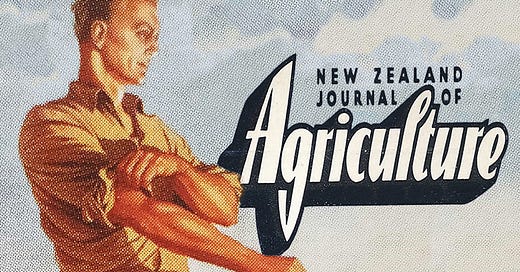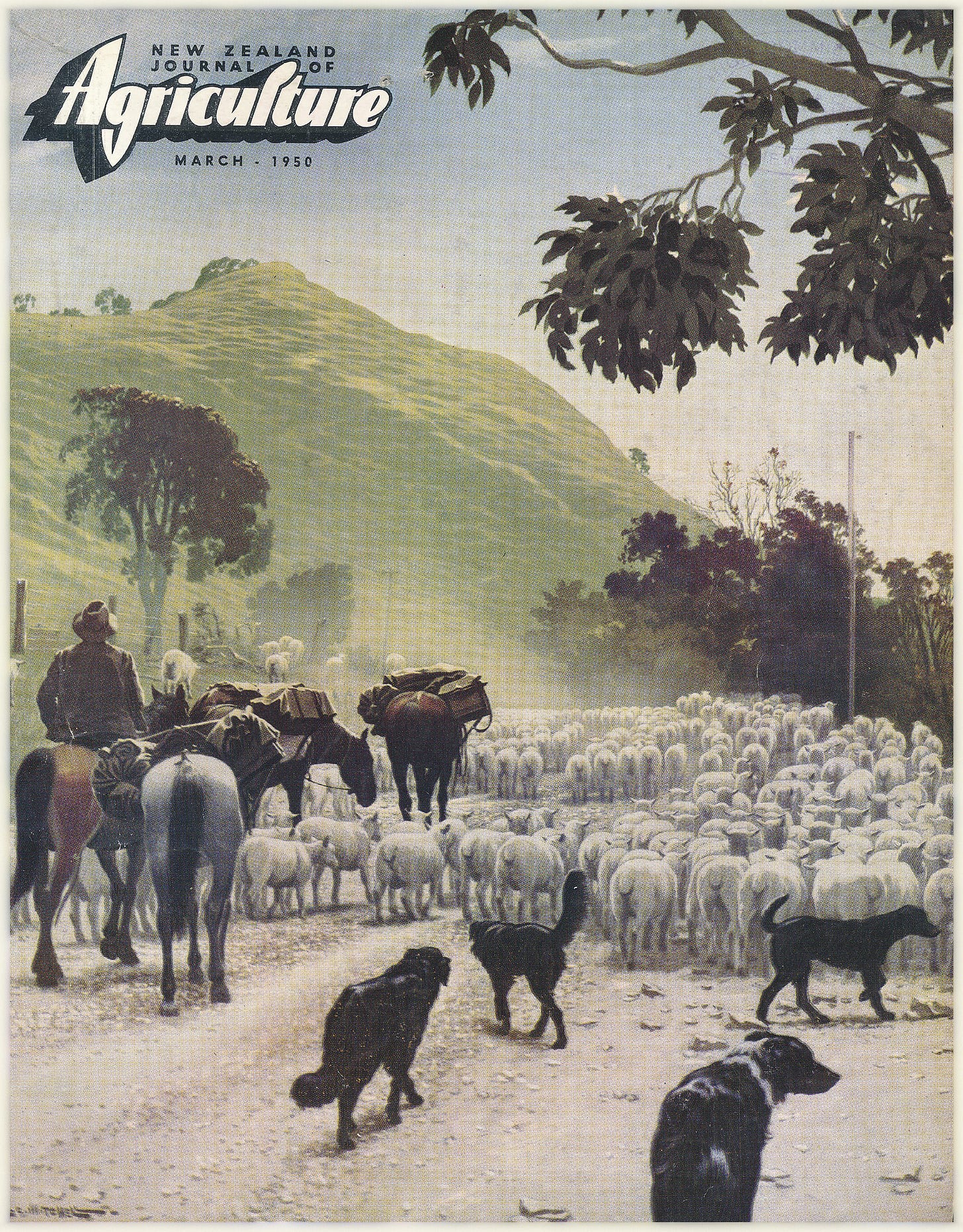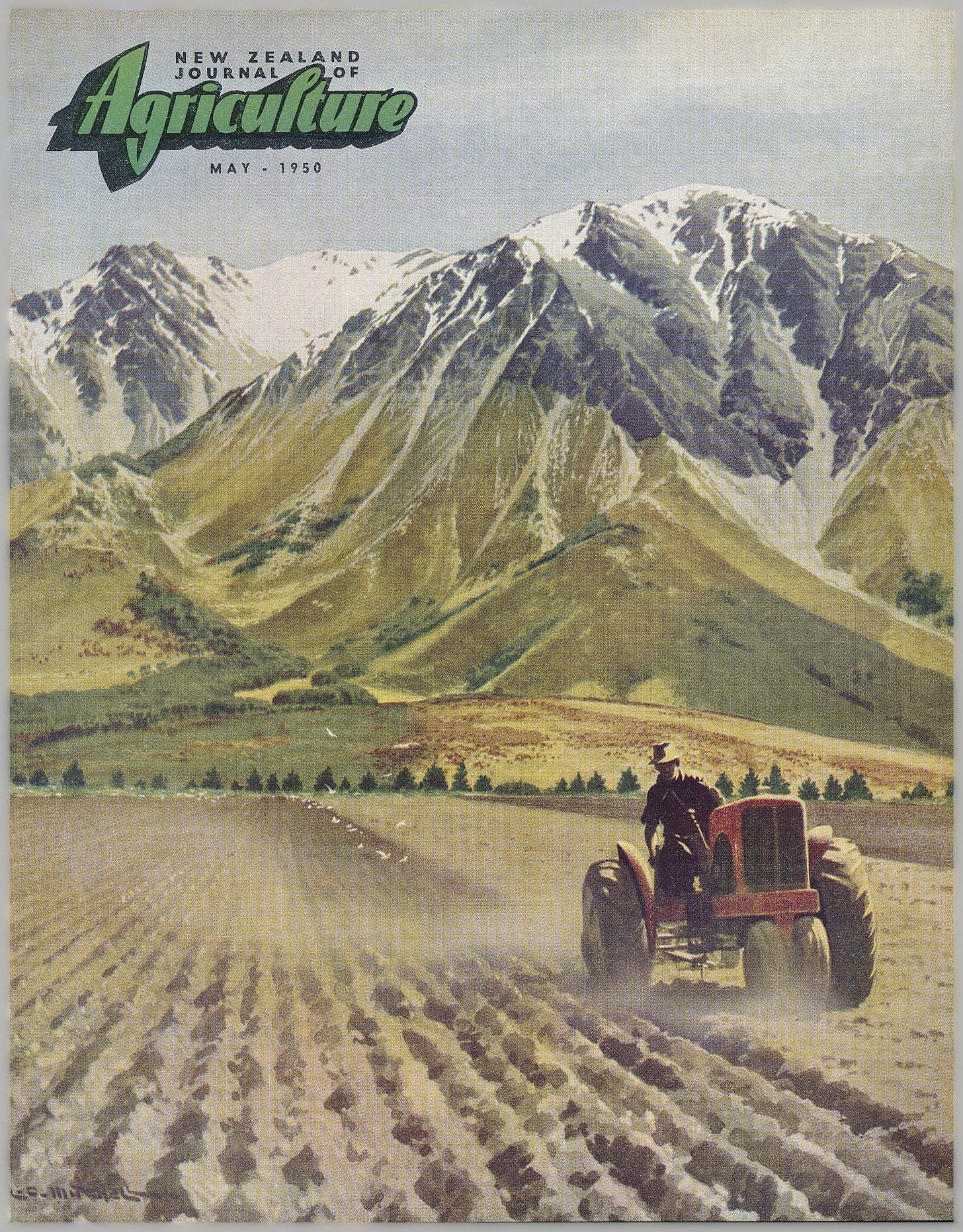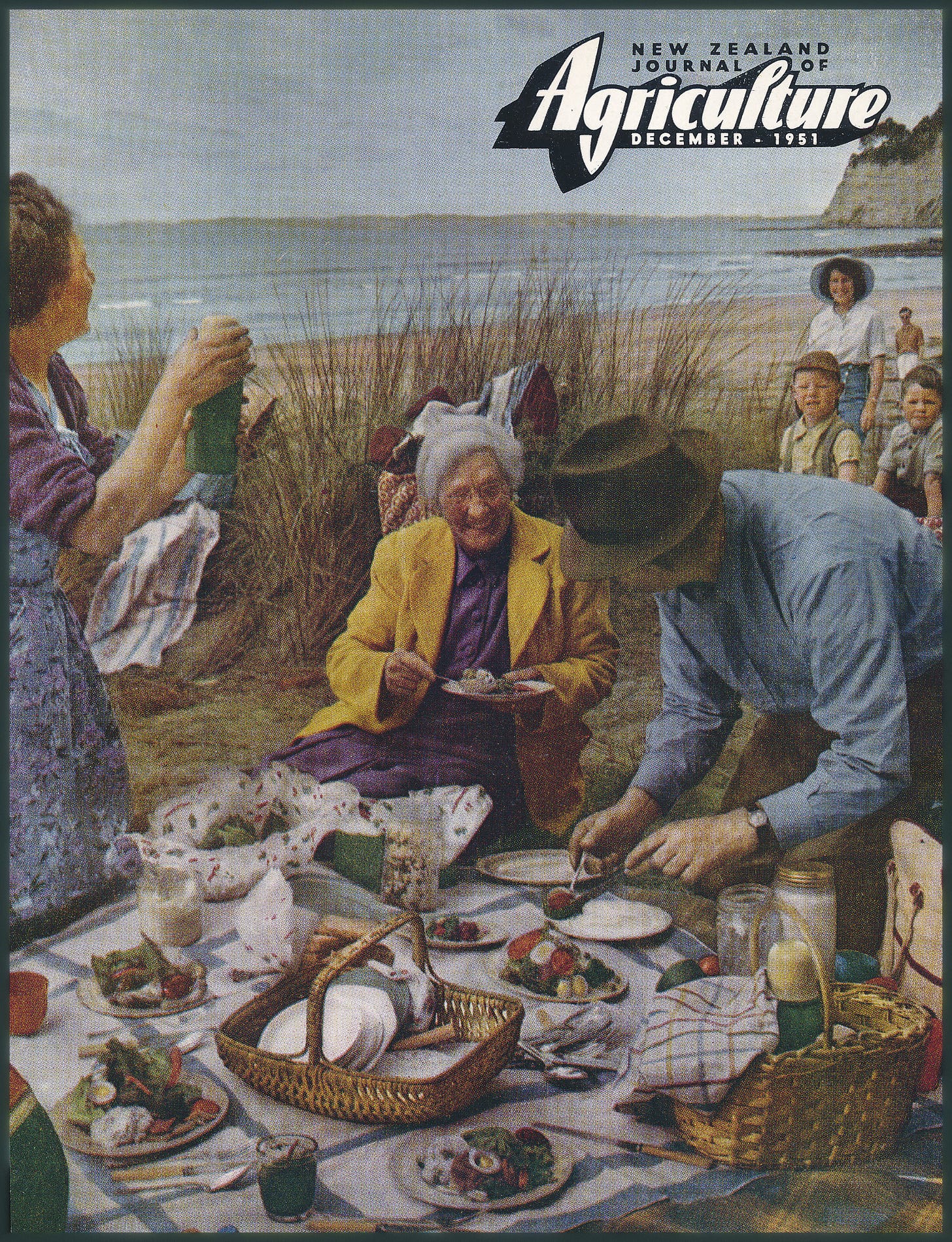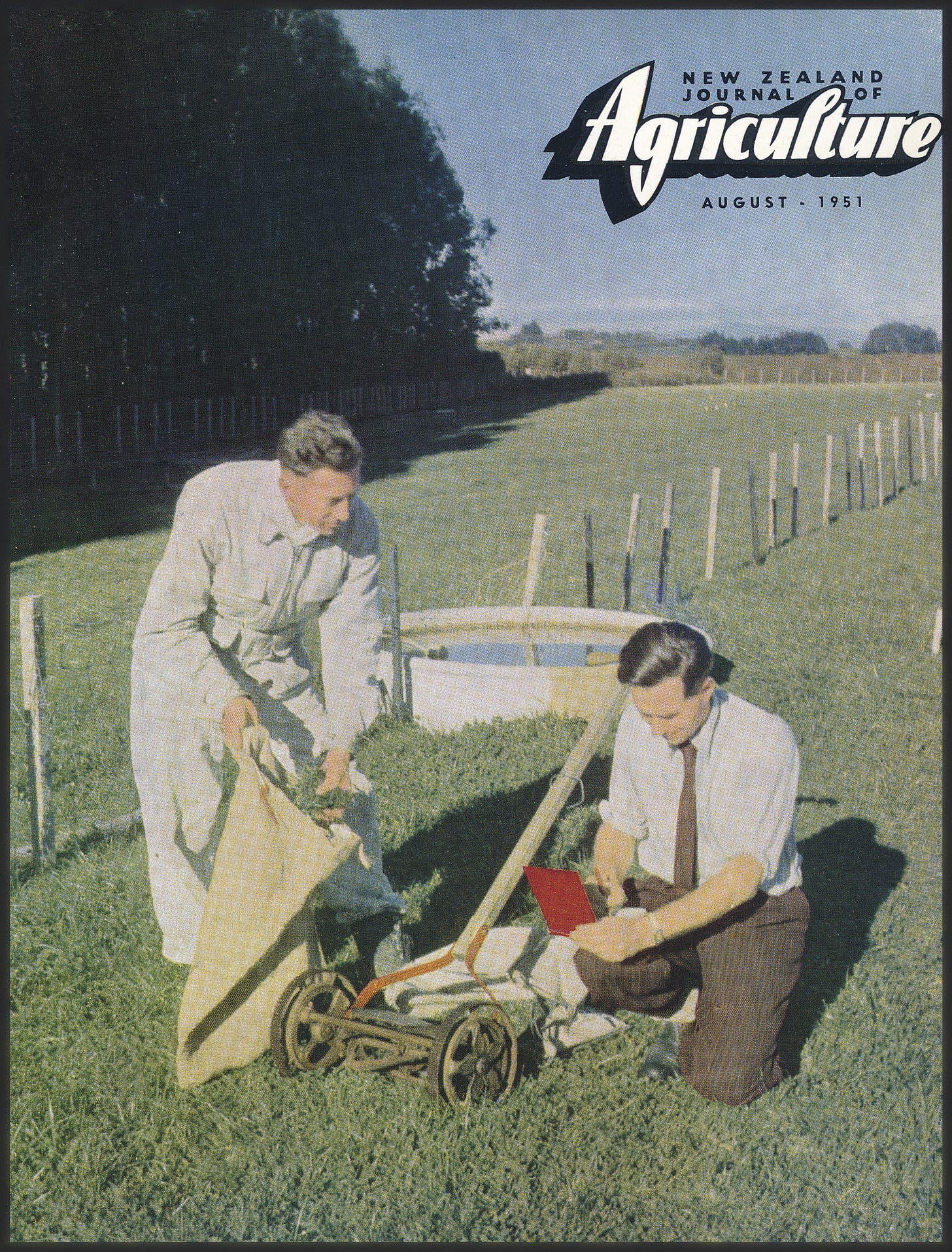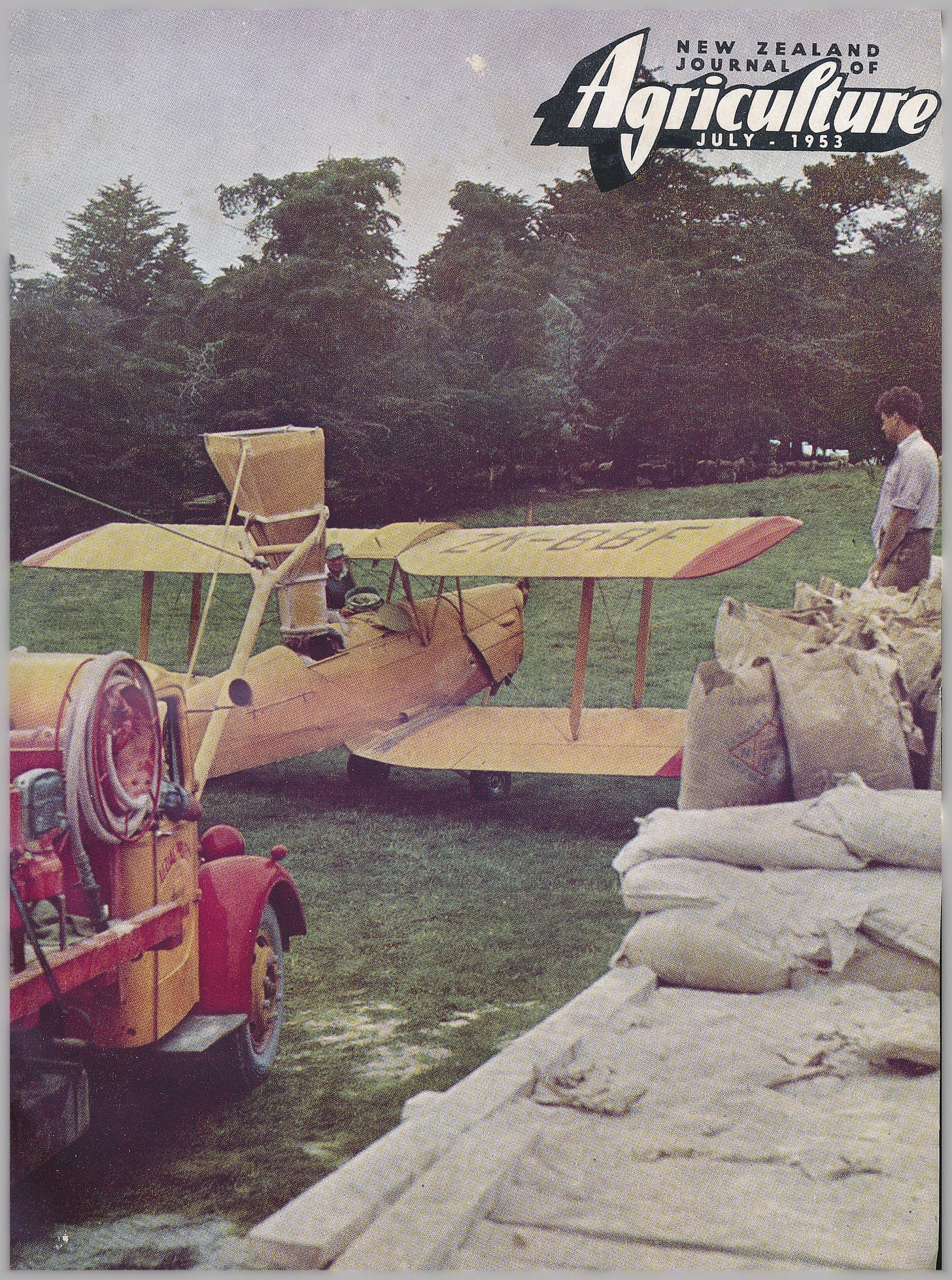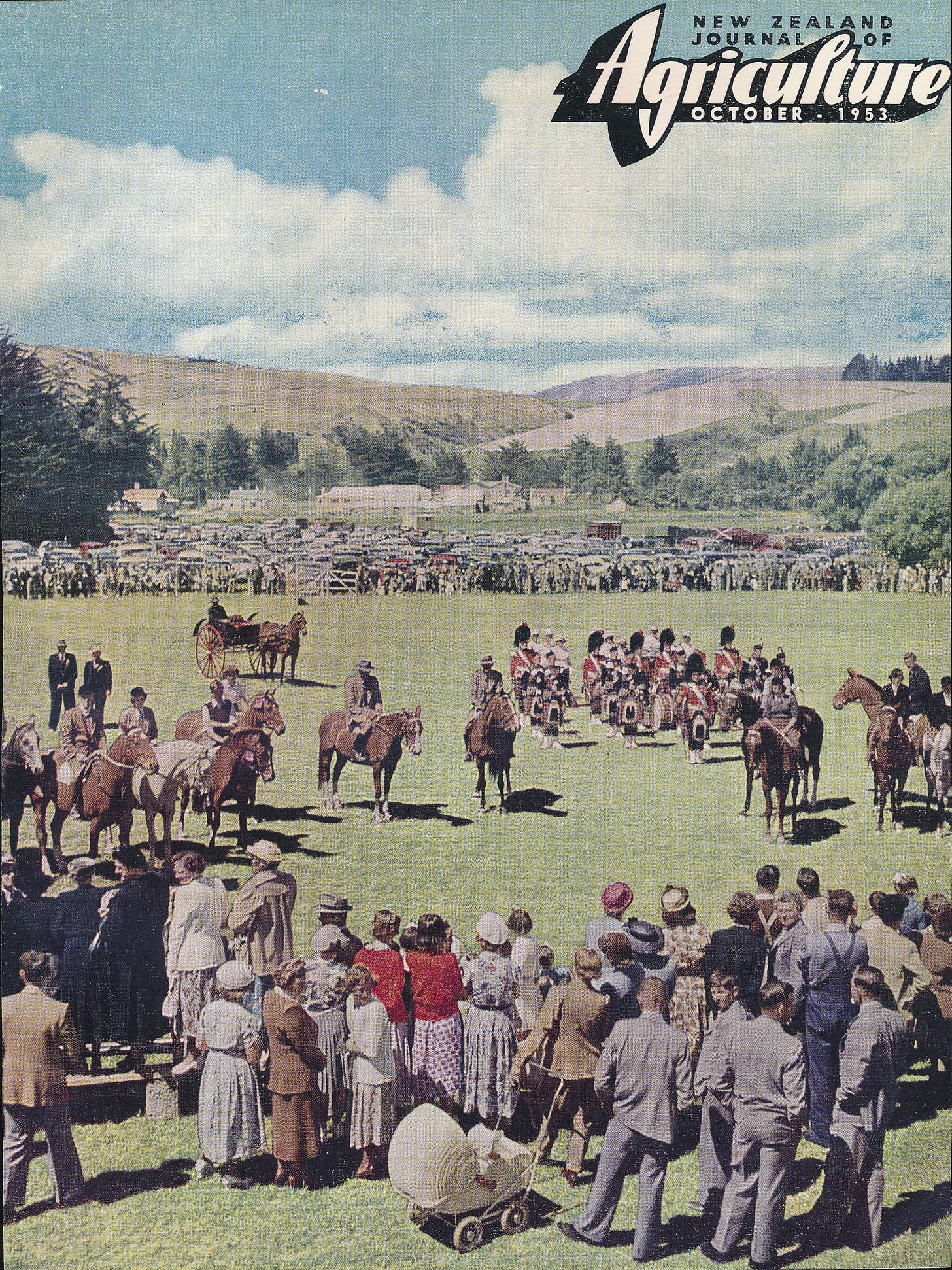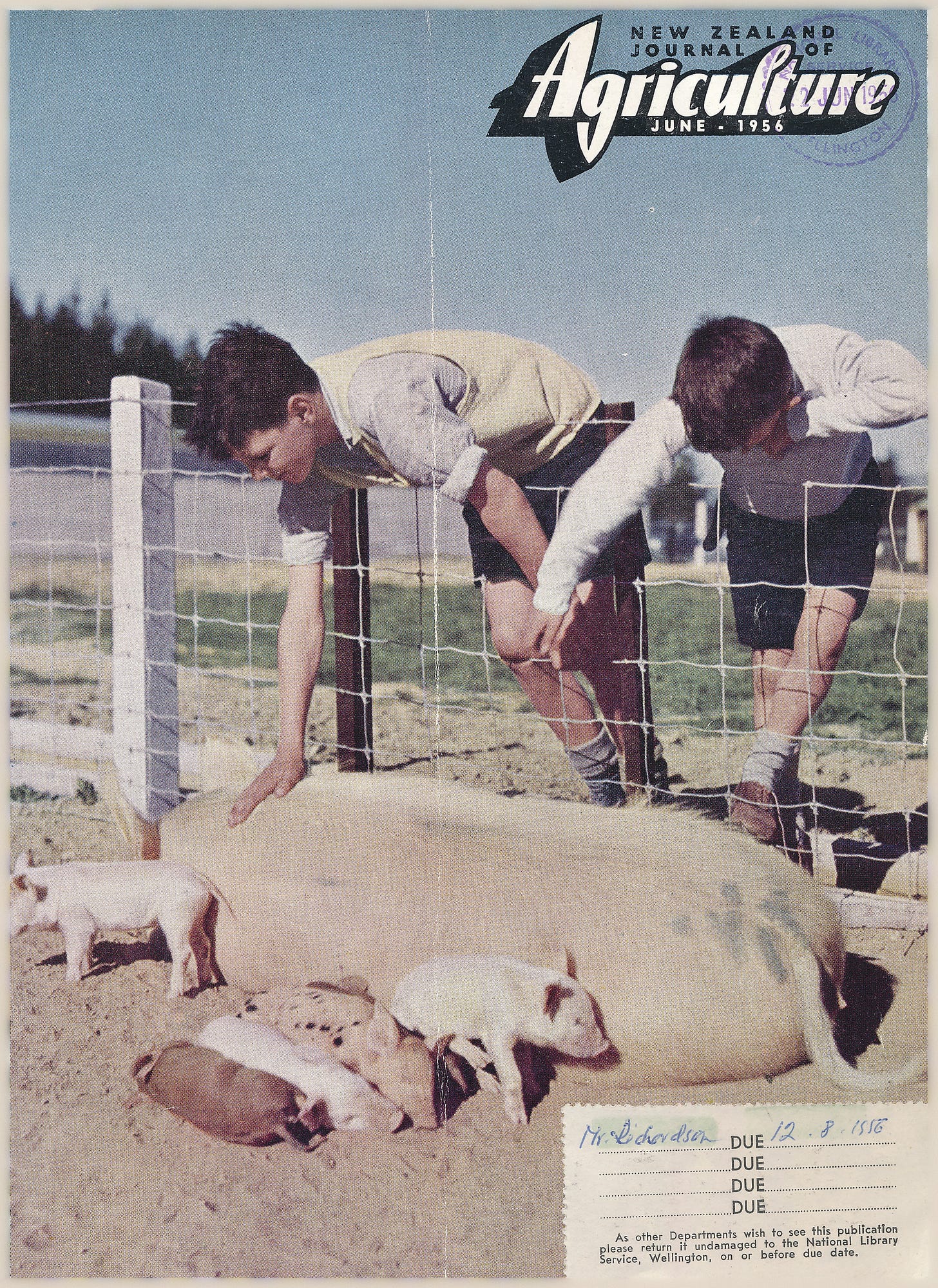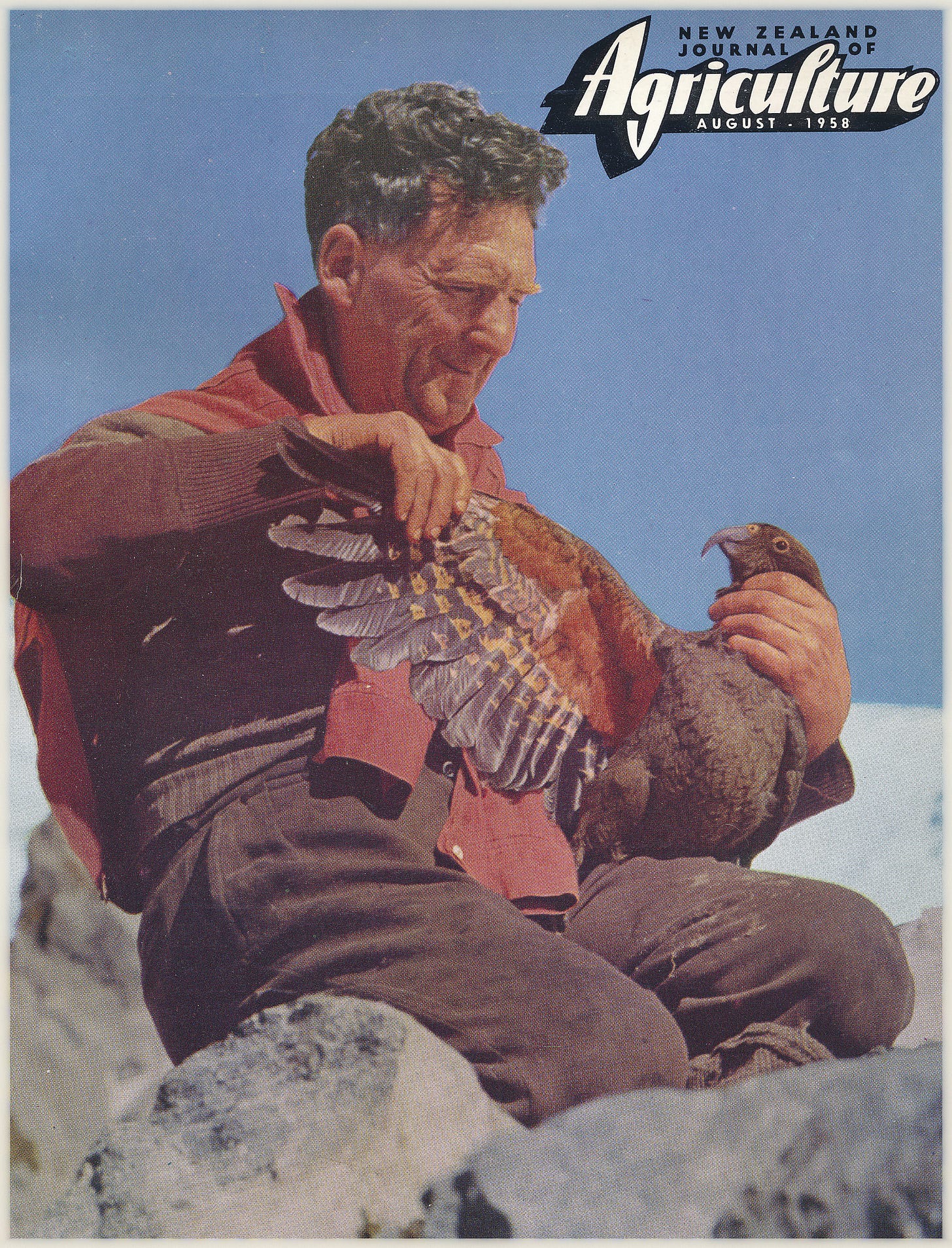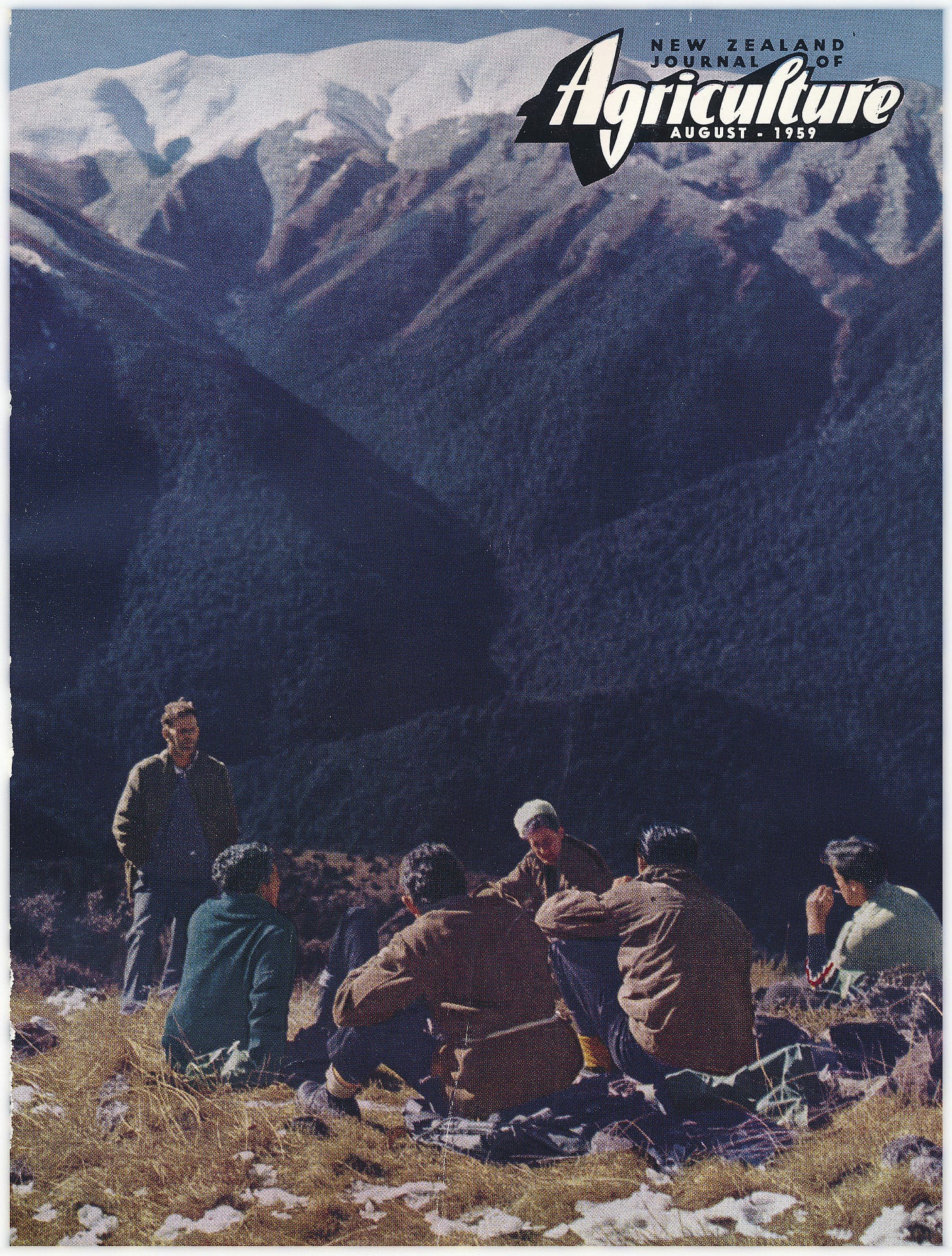By Marcus
It is no secret that New Zealand’s rural areas and communities exhibit a great charm and beauty that we inner-city Kiwis adore.
In the very early 1900s, there came an urgent need for local and national news, information, and products to the farmers and shepherds of New Zealand. The New Zealand Journal of Agriculture sprung into existence as the birth child of their necessity. While the Zealandia Heritage Foundation won’t spend too much time covering the contents of these journals, we have noted and taken interest in the presentation of the covers of these magazines, which exhibit a gritty, real perspective on New Zealand farm and rural life that inner-city Kiwis have simply missed out on. We endeavour to share with you twelve of our favourite picks!
Note: The earliest sources of the contents we show you date only as far back as the December 1945 edition of the Journal of Agriculture - it seems, by the archives, that the earlier front covers of the magazines only started showing up in the mid-40s. In other instances, we were unable to find some front covers due to the scarcity or lack of online publication by the selected archives. You can find much of what we show you from the Papers Past website.
1) March 1950, illustration: A droving scene on the road between Cape Runaway and Opotiki is the subject of this month’s cover, which has been painted by L.C. Mitchell and is based on an Auckland Weekly News photograph. The area is on the east coast of the North Island between Opotiki and Gisborne. Largely surface-sown hill country, it is one of the principal sources of replacement ewes for fat-lamb farmers, and each season thousands of breeding ewes are driven to the railhead at Taneatua. From there they are trucked to disposal centres in the Waikato and the Bay of Plenty.
2) August 1948, illustration: The enormous development made in agriculture in New Zealand in little more than 100 years of European settlement makes it difficult to realise that early settlers had to rely largely for their food supplies on the Māoris, who were skilled cultivators of food crops. That the Māori people of today have succeeded in adapting the skill of their forebears to European farming methods and have absorbed new developments in farming practice has been clearly shown by the valuable part they have played in the Aid for Britain campaign, which they have supported enthusiastically. The old Māori rangatira shown on this month’s cover wearing a Korowai (kiwi cloak) and shark’s teeth earrings and standing by the carved front of a wharenui (meeting house), was painted by L. C. Mitchell from a photograph by R. Steele.
3) August 1949, illustration: Because meals are usually prepared on an extensive scale, particularly during shearing and harvesting, farm kitchens are generously proportioned. Often, too, it is in the kitchen that the farm family relaxes after the evening meal; and it is such a family scene that is reproduced on this month’s cover from an original painting by L. C. Mitchell. While in some respects the pattern of family life on New Zealand farms today conforms to that of previous generations, in other respects it has vastly changed. Transport facilities have been improved to such an extent that in recent years most rural areas receive newspapers and mail regularly and the farmer is able to keep abreast of stock and crop prices and general farming trends. Radio has played a most significant part in removing some of the disabilities of farming communities.
4) May 1950, illustration: To the east of the Southern Alps are large areas of mountainous tussock grassland on which Merino or half-bred sheep are carried at the rate of about one sheep to 4 acres. Although cast-for-age ewes and wethers are sold occasionally, the main revenue from this specialised sheep farming comes from wool. Only relatively small areas of accessible country are available for cultivation and much of it is at an elevation of about 2000 feet above sea level. This month’s cover, which was painted by L. C. Mitchell from a photograph by National Publicity Studios, shows easy country on Grasmere Station, near Cass, being ploughed. In the background is Mt. Misery, a peak in the Black Range.
5) December 1951, photograph: Christmas dinner in the traditional British style was one of the customs maintained in New Zealand by the early settlers, despite the fact that many of the dishes were scarcely appropriate for the season. Though many families, particularly those in country districts, have dinner at home on the grand scale, picnic meals with a modified Christmas flavour have tended to become increasingly popular. This month's cover, a colour reproduction by Perry Photographer from a photograph by Sparrow Industrial Pictures Ltd., shows a family group at an Auckland beach.
6) August 1951, photograph: Peat areas occur throughout New Zealand. Within 20 miles of Hamilton, there are 50,000 acres of wasteland in peat swamps and another 50,000 acres of peat in pastures of low productivity. Research into methods of developing these swamps is a major project at the Department of Agriculture Rukuhia Soil Research Station, Hamilton. This month's cover, which has been reproduced from a colour photograph by Sparrow Industrial Pictures Ltd., shows research workers measuring growth on an experimental pasture on raw peat 30 feet deep. Eighteen months previously this was a wasteland. Last summer and autumn this pasture with the right fertilisers and controlled water level produced as much dry matter as spray-irrigated Waikato pastures.
7) July 1953, photograph: Though aerial topdressing has been done fairly extensively only in the last 3 years, it is estimated that in the 12 months up to April 1953 about 1,000,000 acres were treated. Many problems, chief among them, that of securing an aircraft designed for the work of topdressing under New Zealand conditions have yet to be overcome, but aerial topdressing has been enthusiastically accepted by farmers, particularly those on hill country, and capably organised by air work contractors. This month’s cover shows a Tiger Moth aeroplane being loaded for aerial distribution of superphosphate at Glencoe Station, Maraekakaho, Hawke’s Bay.
8) October 1953, photograph: Competitions for livestock were fostered in the very early days of the settlement of New Zealand and interest has grown with the great development of pastoral farming. Another agricultural and pastoral show season has now begun and fixtures will be held in centres throughout the country until the late autumn. This month’s cover, which was reproduced from a colour photograph by Tom Lloyd, shows a group of horse events competitors and spectators at last year's West Otago show, at Kelso. The next Royal Show, to be staged by the Southland Agricultural and Pastoral Association at Invercargill on 27, 28, and 29th of January, will be visited by Queen Elizabeth and the Duke of Edinburgh.
9) June 1956, photograph: Young pigs interest people of all ages, but particularly children, as this month’s cover clearly shows. Giving a boy a few pigs of his own to manage is probably one of the surest ways of gaining his continued interest in the dairy farm. Later, complete control of the pig section of the farm can provide a son with sufficient interest and inducement to remain on a property which otherwise might not seem to offer sufficient scope for his initiative. If given the chance, such a youth will probably build up the pig section to give valuable diversification in production. This month’s cover has been reproduced from a colour photograph by National Publicity Studios.
10) August 1958, photograph: A kea or mountain parrot (Nestor notabilis) is shown on this month’s cover. The kea is found only in the mountainous country of the South Island, mainly above and in the upper reaches of the forests of the western side of the Southern Alps and on the upper slopes of the eastern side. It is an inquisitive, friendly bird, often very amusing. But for nearly 90 years there has been considerable argument about the charge of sheep killing laid against it. Some strenuously defended the bird for many years, but circumstantial evidence and the testimony of shepherds have brought wide acceptance of the charge. There is considerable variation of opinion, however, as to the degree of loss that can be attributed to it.
11) August 1959, photograph: Young hunter trainees of the New Zealand Forest Service at “school” at Golden Downs, Nelson, are shown on this month’s cover. They are learning about the control of noxious animals, which is an important aspect of the conservation of protected forests. This in turn has far-reaching effects on farm lands. The officers are on Beeby’s Ridge with, in the background, Gordon’s Knob, snowclad and covered in native protection forest. This mountainous area is the watershed of the Motueka River.
12) December 1959, photograph: The “cocky” who has to be about his farm chores early most mornings, winter and summer, is not the only first-light riser on the 25th of December. With our Christmas cover of two young people who were up with the dawn go the best wishes of the “Journal” to all its readers. Photograph by D. R. Brenchley.
In 1960, the New Zealand Journal of Agriculture made a monumental shift from its recognisably charming front cover style to its modern successor. Unfortunately, this was for the worse. We don’t say this because we’re picky urbanists with an eye drawn to nostalgia, though - we say this because the archivists stopped digitising the New Zealand Journal of Agriculture’s material, effectively, as soon as it had been altered.
Thank you to the reader, for taking pleasure in our work. Please consider supporting the Zealandia Heritage Foundation with a donation or subscription to our Substack. This helps greatly to facilitate our work in the online space and to keep the burning love of culture and heritage open to all New Zealanders.

